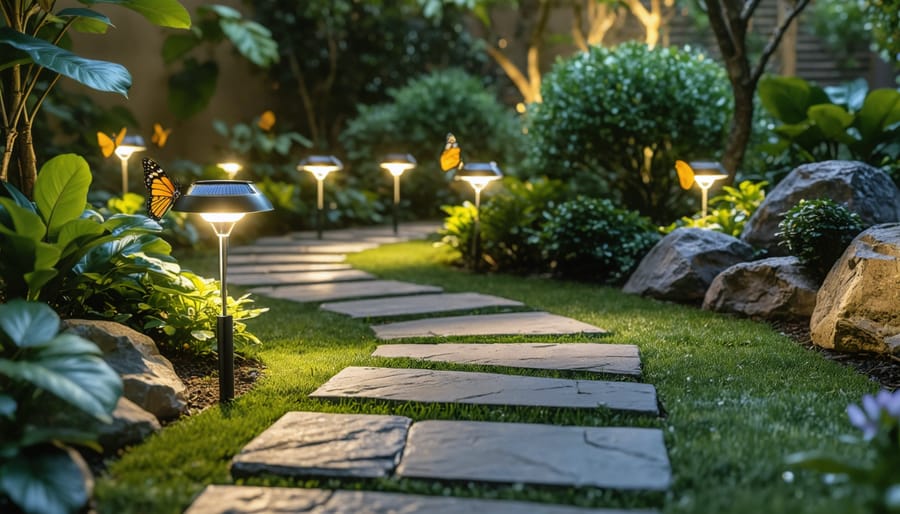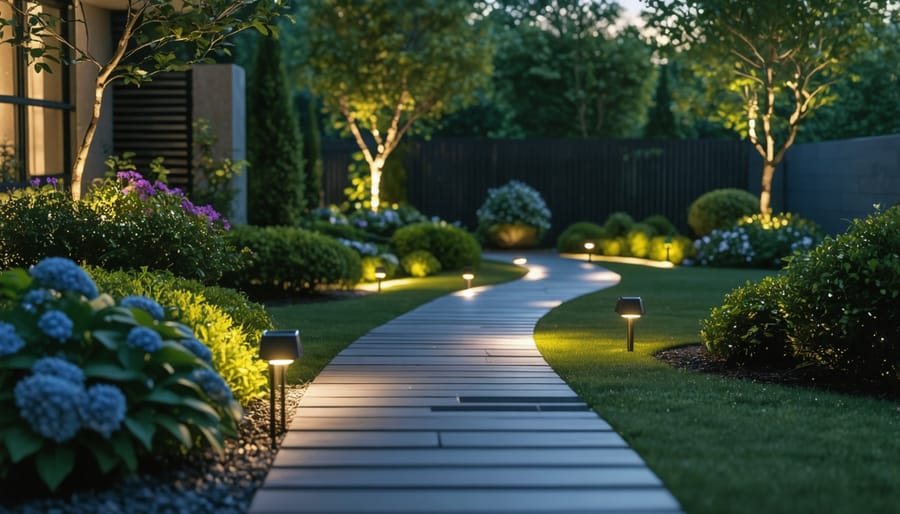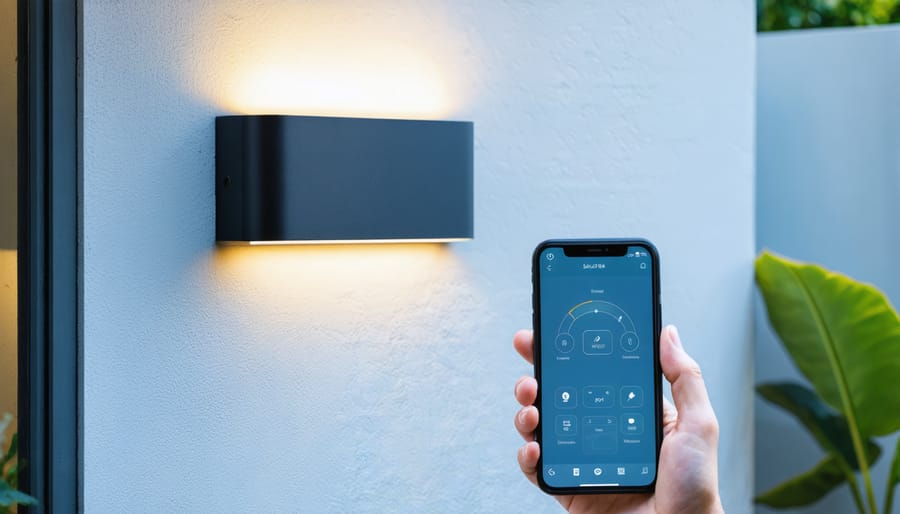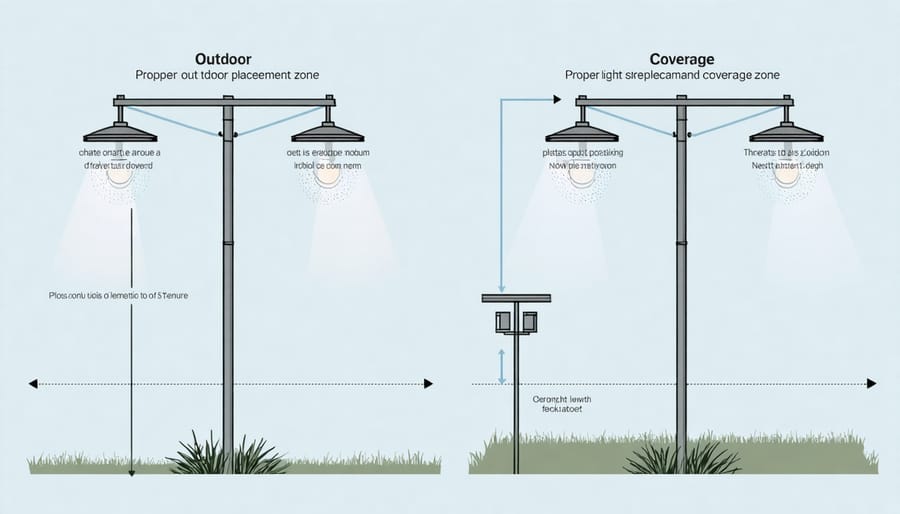Beautiful Outdoor Lighting That Saves Energy (And Your Electric Bill)

Transform your outdoor space into an eco-conscious sanctuary with modern lighting solutions that protect our environment while creating stunning nighttime ambiance. Smart solar-powered fixtures now rival traditional electrical systems in brightness and reliability, cutting energy costs by up to 90% while reducing light pollution. Today’s eco-friendly outdoor lighting combines sophisticated motion sensors, warm LED technology, and sustainable materials to illuminate pathways, highlight landscape features, and enhance security without compromising our planet’s resources.
The rapid evolution of green lighting technology has made it easier than ever for homeowners to make environmentally responsible choices without sacrificing style or functionality. Whether you’re redesigning your entire outdoor lighting scheme or simply replacing a few fixtures, choosing eco-friendly options helps preserve dark skies, protect nocturnal wildlife, and create a more sustainable future – all while adding value and beauty to your home.
Smart Solar Solutions for Your Outdoor Space
Path Lights and Garden Stakes
Solar path lights are an excellent choice for illuminating garden walkways and borders while minimizing your carbon footprint. These lights store energy during the day and automatically illuminate your outdoor spaces at night, requiring no electrical connections or ongoing energy costs.
For maximum efficiency, place path lights approximately 6-8 feet apart along walkways, ensuring they receive direct sunlight during peak hours. Consider the surrounding landscape when positioning your lights – avoid areas heavily shaded by trees or structures that might reduce solar charging capacity.
Modern solar path lights come in various styles, from classic lantern designs to sleek contemporary stakes. Look for models with high-quality solar panels and LED bulbs, which typically provide 8-10 hours of illumination on a full charge. Many now include motion sensors and adjustable brightness settings for enhanced functionality.
Garden stakes can do double duty by incorporating decorative elements like butterflies or dragonflies that add charm to your landscape during the day while providing gentle illumination at night. For best results, clean the solar panels periodically and replace rechargeable batteries every 1-2 years to maintain optimal performance.

Security Lights and Motion Sensors
Modern smart security lighting has evolved to combine safety with sustainability. Solar-powered motion sensor lights offer an excellent eco-friendly solution for home security, requiring no electrical wiring while providing reliable illumination exactly when needed. These fixtures harness sunlight during the day and automatically activate when movement is detected, typically covering ranges from 15 to 40 feet.
Look for LED motion sensors with adjustable sensitivity settings and timing controls to customize the activation duration. Many modern units feature dual-head designs that can illuminate larger areas like driveways or backyards, while smaller single-head options work well for entryways and side paths.
The latest solar security lights include smart features like mobile app integration, allowing you to monitor activity and adjust settings remotely. Some models even connect to home automation systems, creating a comprehensive security network. For optimal performance, install sensors at 6-10 feet height and ensure the solar panels receive adequate sunlight during the day. Regular cleaning of the solar panels and motion sensors will maintain peak efficiency and longevity.
LED Technology: The Bright Choice for Outdoor Lighting
Energy-Efficient Fixtures
LED fixtures have revolutionized outdoor lighting by offering incredible energy efficiency without compromising on brightness or style. Modern LED floodlights use up to 90% less energy than traditional halogen bulbs while lasting up to 25 times longer. For pathway lighting, consider solar-powered LED bollards that store energy during the day and automatically illuminate at night, requiring zero electricity from the grid.
Motion-sensor LED security lights are particularly efficient, operating only when needed and providing peace of mind with minimal energy consumption. For ambient lighting, LED string lights and garden spotlights offer warm, inviting illumination while drawing minimal power. Many of these fixtures now come with smart features, allowing you to control brightness levels and timing through your smartphone.
Look for fixtures with an Energy Star certification, which guarantees optimal efficiency. Consider options with built-in photocells that automatically adjust brightness based on natural light conditions. When selecting fixtures, pay attention to the lumens-per-watt ratio – higher numbers indicate better energy efficiency. Most quality LED outdoor fixtures now achieve 100 lumens per watt or more, making them an excellent investment for both your home and the environment.
Smart Controls and Timers
Smart controls and timers are game-changers for eco-friendly outdoor lighting, offering both convenience and significant energy savings. By implementing motion sensor lighting controls, you can ensure lights only activate when needed, reducing unnecessary power consumption. Modern smart systems allow you to set specific schedules, adjusting brightness levels based on time of day or seasonal changes.
Many homeowners find success with astronomical timers, which automatically adjust to sunset and sunrise times throughout the year. These clever devices eliminate the hassle of manual adjustments while maximizing energy efficiency. You can also integrate your outdoor lighting with smartphone apps, allowing remote control and monitoring of your system from anywhere.
For optimal results, consider combining multiple control features. For example, use motion sensors near entryways, timers for landscape lighting, and daylight sensors for security lights. This layered approach ensures your outdoor spaces remain well-lit and secure while minimizing energy waste and light pollution.

Strategic Placement for Maximum Efficiency
Lighting Zones and Coverage
Strategic placement of outdoor lighting zones is essential for maximizing efficiency while minimizing energy waste. Start by identifying three key areas: safety zones (pathways, steps, and entrances), activity zones (patios and gathering spaces), and accent zones (landscaping features). Install motion sensors in safety zones to ensure lights activate only when needed. For activity zones, use timers or smart controls to adjust brightness based on usage patterns. Accent lighting should be minimal and directed specifically at focal points to prevent light pollution.
Consider the natural flow of movement through your outdoor space when planning placement. Keep fixtures at appropriate heights and angles to prevent glare and light spillage into neighboring properties. Remember that less is often more – strategic placement of fewer, well-planned lights can provide better coverage than numerous scattered fixtures, resulting in both energy savings and enhanced ambiance.

Avoiding Light Pollution
Light pollution not only affects our view of the night sky but also disrupts wildlife and wastes energy. To minimize these impacts, position lights to shine downward rather than up or outward. Use fixtures with shields or hoods that direct light exactly where needed, such as along pathways or entry points. Motion sensors and timers help ensure lights operate only when necessary, reducing unnecessary nighttime illumination.
Choose warm-colored bulbs (2700-3000K) over bright white or blue lights, as these are less disruptive to nocturnal animals and human sleep patterns. Install lights at appropriate heights and angles to prevent light spill onto neighboring properties or into the sky. Consider using lower wattage bulbs in multiple fixtures rather than a single bright light source, creating gentle, even illumination that serves your needs while respecting the natural darkness.
Remember that less can be more when it comes to outdoor lighting – focus on essential areas and avoid over-lighting your outdoor space.
Maintenance and Care Tips
Regular maintenance of your eco-friendly outdoor lighting system ensures optimal performance and longevity while maximizing energy efficiency. Start by creating a monthly cleaning schedule to remove dust, dirt, and debris from solar panels and light fixtures. A gentle wipe with a soft, damp cloth is usually sufficient – avoid harsh cleaning chemicals that could harm the environment or damage the equipment.
For solar-powered lights, check that panels remain unobstructed by fallen leaves, snow, or growing vegetation. Trim nearby plants regularly to prevent shading, and adjust panel angles seasonally to optimize sun exposure. During winter months, you might need to clean panels more frequently to maintain efficient charging.
Inspect all wiring connections quarterly, especially for low-voltage systems. Look for signs of wear, exposed wires, or loose connections. Replace any damaged components promptly using eco-friendly alternatives when available. For LED fixtures, while they rarely need replacement, check for any dimming or color changes that might indicate it’s time for an upgrade.
Keep a maintenance log to track cleaning dates, repairs, and part replacements. This helps identify patterns and anticipate future needs. For motion sensors and timers, test their functionality monthly and adjust settings as daylight hours change throughout the year. Consider updating your system’s programming seasonally to match outdoor lighting needs with natural light availability.
Remember to properly dispose of any replaced components through local recycling programs, especially batteries and electronic parts. This final step ensures your maintenance routine stays true to your eco-friendly goals.
Making the switch to eco-friendly outdoor lighting is a smart investment that benefits both your property and our planet. By choosing LED bulbs, solar-powered fixtures, and motion sensors, you can significantly reduce energy consumption while maintaining beautiful and functional outdoor spaces. Remember that proper placement and timing controls are just as important as the fixtures themselves. Start small by replacing one or two traditional lights with eco-friendly alternatives, and gradually expand your sustainable lighting system. The initial cost may be higher, but the long-term savings on energy bills and reduced environmental impact make it worthwhile. With today’s wide range of stylish, efficient options, there’s never been a better time to illuminate your outdoor space responsibly while creating an inviting atmosphere for your home.

